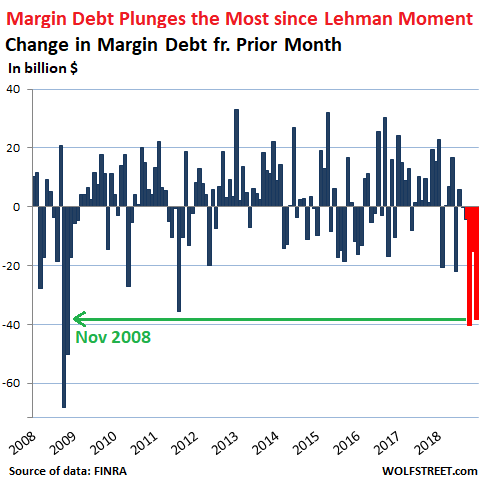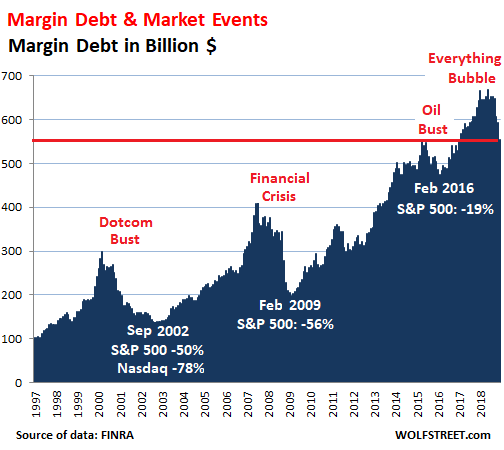I can't link to articles yet, but here's a quote from an article about Corporate Debt written by Jeff Cox for Nightly Business Report from November 21st, 2018. Total corporate debt has swelled from nearly $4.9 trillion in 2007 as the Great Recession was just starting to break out to nearly $9.1 trillion halfway through 2018, quietly surging 86 percent, according to Securities Industry and Financial Markets Association data. Other than a few hiccups and some fairly substantial turbulence in the energy sector in late-2015 and 2016, the market has performed well. In fact, Fitch Ratings forecasts bond defaults for 2019 at the lowest since 2013, with leveraged loans at the lowest since 2011. Such high debt levels are “certainly something to take notice of,” said Eric Rosenthal, Fitch’s senior director of U.S. leveraged finance. “In terms of the systemic risk, at the moment it’s not there.” One reason markets worry about debt is that there’s not as much cash around to cover it. The cash-to-debt ratio for corporate borrowers fell to 12 percent in 2017, the lowest ever. I'm not one to speculate, for many reasons, but all of that quote sounds like very risky behavior to me.Over the past decade, companies have taken advantage of low rates both to grow their businesses and reward shareholders.
Thank you! I appreciate it. Oh. Hmm. I still get a message that says ... That's okay though. If you want to check it out, the article's title is A $9 trillion corporate debt bomb is ‘bubbling’ in the US economy. It's a bit long, but it covers quite a bit, so it's worth the read.Sorry, as a new user, you cannot post links in comments. You will get this ability after a while.
I only recently learned this, and it's just two: Microsoft and Johnson & Johnson's. In 1992, the number of AAA-rated companies was 98. I was also surprised to learn how small a fraction of corporate financing comes from issuing equities. Equity financing is dwarfed by bond issuing, although it's the former we hear about except for in rare instances like the OP here. I seem to recall a professor saying that the bond market itself is dwarfed by the largest source of commercial financing, i.e. bank loans. I can't find the graph he showed, I'll have to settle for this one (ends in 2009) that omits the loan volume. But I recall a similar proportion of bonds:equities as loans:bonds.
If I recall correctly the bond market is about six times the size of the stock market... but it all gets fuzzy because so much stuff is traded off-book these days anyway. I can't find any statistics newer than 2016, at which point dark pools were 40% of stock trades. Most of the bonds traded most people have no access to and loans are large piles of money helping out other large piles of money. One thing about loans - there's less speculation there. Bonds and equities? Oh shit hold onto your butts.



